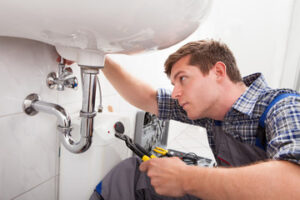Keeping your family (and pets) safe from pests is serious business and you should take the time to carefully evaluate your options. Here are the top 5 things to consider when choosing Pest Control Shawnee KS company:
Ask friends, neighbors, or coworkers for recommendations, and check out online reviews. Also, look for memberships in professional associations and certifications on their website.

Reputation
There are a few factors to consider when choosing a pest control company. First, look for a local company with a good reputation. This will ensure that they have a good understanding of the pests in your area and how to treat them effectively. You should also ask about the company’s experience and qualifications. A reputable company will be willing to provide you with references from past clients so that you can contact them and inquire about their satisfaction with the service provided.
Another factor to consider is the safety of the company’s products and methods. Look for companies that prioritize the safety of their customers, employees, and the environment by using low-toxicity treatment options and other environmentally friendly practices.
Additionally, be sure to look for a company that offers a guarantee or warranty on their services. This will give you peace of mind that if you are not satisfied with the results of their services, they will work to correct the problem.
Finally, look for a pest control company that provides excellent customer service. This is especially important since a pest infestation can often be a long-term problem that will require repeated treatments to eliminate the infestation. A pest control company that offers excellent customer service will be more than happy to answer any questions that you may have.
In addition, be sure to read online reviews and ask friends and family members for recommendations. By taking the time to do a little bit of research, you can be confident that you are selecting a reputable and experienced pest control company. Choosing the right pest control company can save you time, money, and hassle in the long run.
Experience
The more experience a pest control company has, the more likely they are to be capable of dealing with any pest issue. This is particularly true if you are looking for a commercial pest control service. The company you choose must have experience working in your specific industry to ensure they can comply with any strict hygiene regulations.
Checking a company’s website can help you determine how experienced they are, but it’s also worth asking for references from previous clients. This will give you a good idea of how satisfied they were with the service and how helpful the staff was.
You should also ask the company about their licensing and certifications. It’s a good idea to use only certified pest control companies because they will have undergone extensive training and have the skills necessary to perform the work safely. They should also be members of professional associations, which is a sign that they are dedicated to their craft and up-to-date on the latest developments in the industry.
It is also a good idea to ask the company about their pest control methods. Some companies use very toxic chemicals while others prefer to use more natural methods. If you have kids or pets, you may want to consider a company that uses more natural methods, as they will be safer for your family. It’s also a good idea to get quotes from several different companies and to look at value rather than just price. The cheapest option is not always the best, and you should be sure to find a company that can provide quality services at a fair price. A reputable pest control company will be happy to explain their prices and services in full so that you can make an informed decision.
License
A pest control company’s license is an important factor to consider. It indicates that they have been properly trained and vetted to provide quality service. Licensed companies are more likely to use accredited chemicals that will be safe for you, your family, and your pets. They will also adhere to state-specific guidelines on the use and disposal of pesticides, minimizing the environmental impact.
A reputable pest control company will be licensed and insured. Ask for their insurance information and verify that they have a general liability policy to protect you against property damage. You should also look for worker’s compensation and professional liability policies to ensure that they can take care of any damages or injuries caused during the treatment process.
You should also check whether a company belongs to any professional associations. Membership in a professional association may indicate that they are keeping up with new developments in pest control methods, safety, training, and research. Membership may also mean that they agree to abide by a code of ethics and are committed to maintaining high standards in their business practices.
If you choose a pest control company, it is best to discuss their recommended treatment program with them before they start work. They should be able to clearly explain the pesticides they are planning to use and their potential effects on the environment, the health of occupants (especially infants and elderly people), and the condition of your yard.
Be wary of companies that offer free inspections or are willing to negotiate their fee for services. An in-depth pest inspection and analysis requires experience and time, so any company that offers this service for a low price is likely cutting corners and not offering a high level of professionalism.
Insurance
A reputable pest control company will have the proper insurance coverage to protect both the homeowner and their technicians in case of an accident or damage during treatment. Look for general liability insurance as well as workers’ compensation and commercial auto coverage if they have employees.
A pest infestation is a serious problem that should be addressed as quickly and thoroughly as possible. However, homeowners should avoid rushing to the first pest control company they find. Low-quality companies may do more harm than good by damaging your property or using dangerous/unaccredited pesticides. Instead, you should get bids from several different pest control companies and look at value over price.
For example, you should ask the potential pest control companies about the types of pesticides they will be using and why. You should also ask about other treatment options like mechanical, physical, and environmental controls. You should ask about any special instructions they might have for you (such as vacating the house, emptying cupboards, removing pets, and when you can re-enter treated areas).
In addition to a solid reputation and experience, the right pest control company will use environmentally friendly solutions and methods. This will minimize your family’s exposure to harmful chemicals and make your home safer for children and pets. Additionally, a reputable pest control company will offer a satisfaction guarantee and provide follow-up care to ensure that the pests do not return.
Finally, you should check if the pest control companies you are vetting have professional associations and/or certifications. These organizations keep their members up-to-date on new developments in pest control techniques, safety, and research. And they require that their members honor a code of ethics.
Customer Service
Choosing the right pest control company is an important decision to make to ensure that your home is free of pests. Taking the time to thoroughly evaluate your options will help you find the company that best fits your needs and budget. Make sure to check licensing and certification, reviews, experience, customized treatment plans, eco-friendly solutions, insurance and guarantees, and customer service.
It is also a good idea to ask for recommendations from friends and family members who have hired pest control services in the past. You can also read online reviews to find out what other people are saying about the company’s services. You should also consider whether the pest control company inspects before starting work. This will help them understand the scale and cause of the infestation and develop a more effective treatment plan.
A reputable pest control company will be transparent in its pricing and services. They should offer a free estimate and inspection before billing you. They should also provide a clear breakdown of their pricing structure, so you can be aware of any additional charges that may apply.
The final factor to look for is the quality of customer service. It is essential to choose a pest control company that cares about its customers and goes above and beyond to deliver exceptional results. Providing regular follow-ups, special deals for repeat business, and building personal relationships can all go a long way in winning customers’ loyalty and trust. In addition, addressing any complaints promptly will show that the pest control company puts its customers first and is committed to providing high-quality services.

